#Kugali Media
Text
Tola is the moment!!
Have you all seen Iwájú? It's pretty good, and I hope it gets another season to properly explore the advancement of technology in Lagos and fixing the classism that takes place throughout the series.



#iwájú#iwaju#African cartoons#nigerian cartoon#disney+#disney plus#disney#kugali media#African storytelling#black cartoons#tola#Tola martins
55 notes
·
View notes
Text
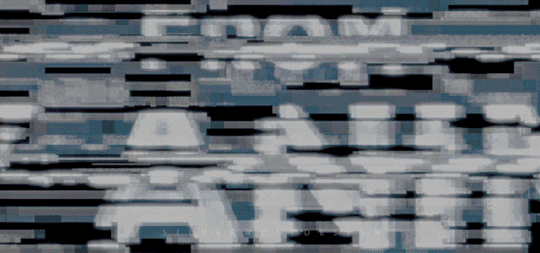

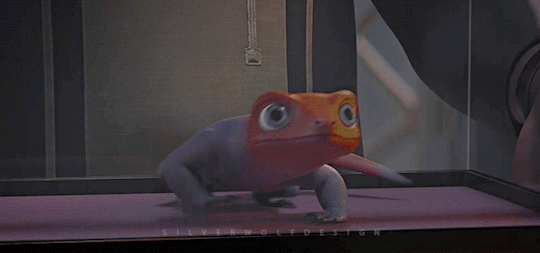


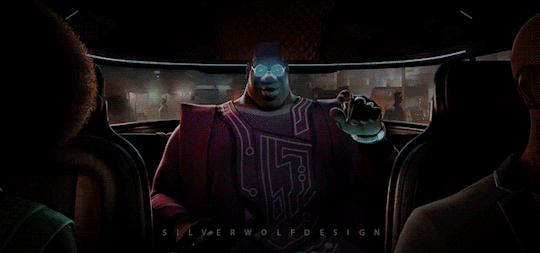
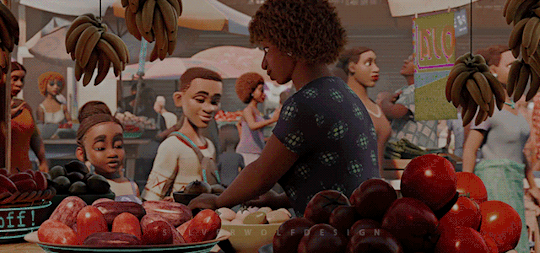
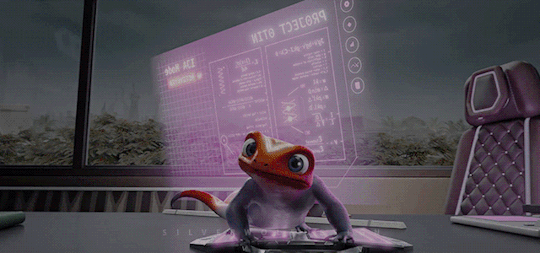
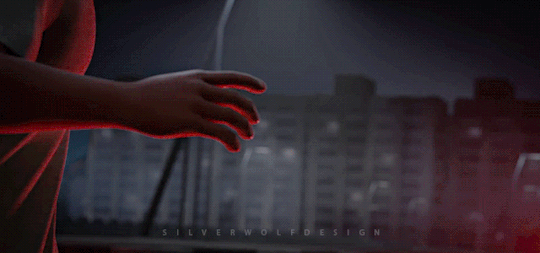

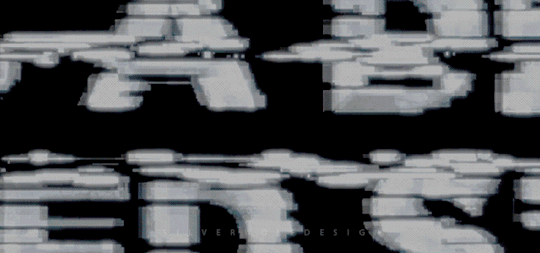
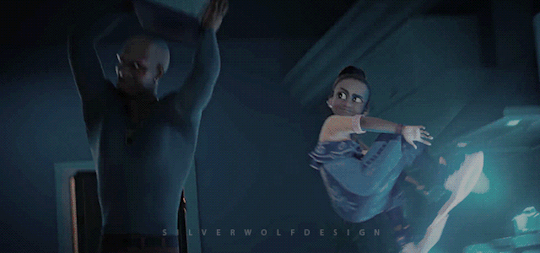
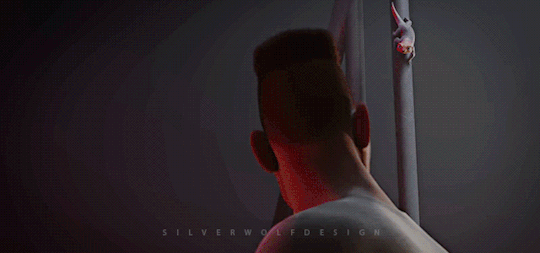

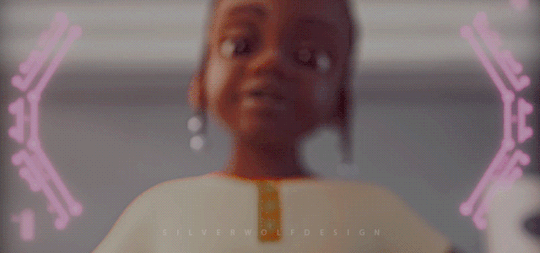
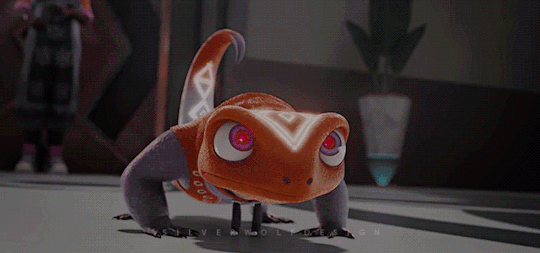
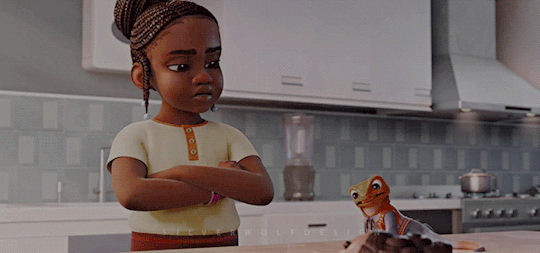


🡒 🎥 IWÁJÚ • Disney series - Kugali, 2024
“Iwájú” is an original animated series set in a futuristic Lagos, Nigeria. The exciting coming-of-age story follows Tola, a young girl from the wealthy island, and her best friend, Kole, a self-taught tech expert, as they discover the secrets and dangers hidden in their different worlds.
• source
#Iwájú#disney#disney +#miniseries#series#Walt Disney Animation Studios#Kugali Media#2024#tola#kole#animation#trailer#gif#my gif#cute#(gif)#(my gif)#(series)#(tv series)
10 notes
·
View notes
Text
Bringing Lagos to your screens, Iwájú is a stunning homage to Nigerian culture 🇳🇬✨
#Disney Plus#Lagos#Nigeria#Advice to Creators#Creativity#Entertainment#Animation#Coming of Age#Kugali Media#Advice
3 notes
·
View notes
Text

Iwaju NEEDS a DVD release
Iwaju NEEDS a DVD release
Iwaju NEEDS a DVD release
Iwaju NEEDS a DVD release
Iwaju NEEDS a DVD release
📀📀📀📀📀📀📀📀📀📀
#iwaju#disney#disney plus#kugali#physical media#dvd#black art#african art#cyberpunk#science fiction movies#scifi movies#afro futurism#afrofuturism#art#art preservation#tv shows#tv#tv series#disney tv shows#disney plus series#spreading awareness#signal boost#streaming services
2 notes
·
View notes
Text
From the article:
For the first time in Disney's 100-year history, the company is collaborating with an outside studio to create an original animated show. The show, Iwaju, arrives on February 28 and a new trailer for it has landed.
Disney Animation is producing the show in collaboration with Kugali Media. The series is set in futuristic Lagos, Nigeria and tells a coming-of-age story of Tola, a little girl, and her friend Kole. Together, Tola and Kole will "discover the secrets and dangers hidden in their different worlds." The trailer shows off the program's striking visuals and intriguing concept.
Iwaju is directed by Olufikayo Ziki Adeola, with Hamid Ibrahim serving as production designer and Toluwalakin Olowofoyeku as cultural consultant. Disney Animation's Christina Chen produces the series, which is written by Adeola and Halima Hudson.
The show is voiced by Simisola Gbadamosi, Dayo Okeniyi, Femi Branch, Siji Soetan, and Weruche Opia.
youtube
#iwaju#animation#disney#afrofuturism#cyberpunk#science fiction#sff#film#movies#news#animation news#film news#entertainment news#Youtube
58 notes
·
View notes
Text
Iwájú has been a very good show so far for many reasons, but it's also the first show I think I've seen ever where the closed caption subs actually transcribe a non-english language instead of just [speaking x]. The Yoruba is transcribed and a non-hearing person who knows Yoruba would have the same ability to understand it as a hearing person who knows Yoruba. The show uses English, Nigerian Pidgin (which is mutually intelligible with English), and Yoruba and it all gets transcribed in the closed captions. This has to be because Disney made it in collaboration with the Pan-African studio Kugali Media.
#iwàjú#iwaju#disney animation#its a limited animated series so its only two hours long and its the best family animated film ive seen ever#it came out on the 28th and im disapointed i never saw any offical or fan advertising for it#accessibility
26 notes
·
View notes
Text
Kizazi Moto: Generation Fire Spoiler-Filled Review

Kizazi Moto: Generation Fire, known as Kizazi Moto for short, is an Africanfuturist animated film anthology series. It is the second animated series produced by a South African animation studio, Triggerfish. It follows Kiya and the Kimoja Heroes, which premiered on Disney+ earlier this year. Peter Ramsey is the executive producer. Tendayi Nyeke and Anthony Silverston join him as supervising producers. Shofela Coker, Raymond Malinga, and Ahmed Teilab developed the series. As a warning, this review will discuss death, blood, suicide, and other related themes. This piece was written during the 2023 WGA and SAG-AFTRA strikes. Without the labor of the writers and actors currently on strike, Kizazi Moto, being reviewed here, wouldn't exist.
Reprinted from Pop Culture Maniacs and Wayback Machine. This was the forty-third article I wrote for Pop Culture Maniacs. This post was originally published on August 6, 2023.
Unlike some other series, Kizazi Moto is a bit hard to describe. While each of the ten short films within this series clearly has an African perspective, told by one or more directors, the themes of each episode can be vastly different. The music, animation style, writing, and everything else can also differ. Sometimes, it feels like the sinew holding the series together is not as strong as it could be. Even so, each film stands on its own, with many providing a possible starting point for future animated series.
In order to understand where the series stands, it is important to have some background about the genre. This series is outwardly Africanfuturist. In the reporting, before the series released, some media outlets incorrectly described it as "Afrofuturist." These two genres are not the same. Afrofuturism, which is well-known as a genre, explores intersection of science and technology with the African diaspora, addressing concerns and themes of that diaspora. The term was coined in 1993 by White male cultural critic Mark Dery. This has led some to use broader terms like "Black science fiction" and "Black speculative fiction" or embrace the term "Africanfuturism".
Africanfuturism centers on fusion of African mythology, history, culture, technology, and point of view, within Africa itself. Nigerian-American writer Nnedi Okorafor coined the term in 2019. She described it as a sci-fi sub-category deeply rooted in "African culture, history, mythology and point-of-view" which does not center or privilege Western countries, while retaining optimistic future visions. It is also, in her description, written and centered on people who are of African descent, and rooted in Africa. As such, it can also include the African diaspora.
While there has been more Africanfuturist literature, and comics, in recent years, there are very few films. One such film put in the genre (by some) is Black Panther. Others have included Pumzi and Ratnik, along with Okorafor's Binti and Who Fears Death, which are getting live-action series adaptations. Even so, there are no currently ongoing Africanfuturist series. As such, Kizazi Moto may prove vital to the possibility of future series in the genre. It will only join the ranks of series in development, like Iwájú, created by a Pan-African British company, Kugali Media, in collaboration with Walt Disney Animation Studios.
As such, Kizazi Moto differs from My Dad the Bounty Hunter, the upcoming Dantai (produced by Idris Elba and Sabrina Dhowr). The still-in-production Iyanu: Child of Wonder (releasing in 2024) may include some Afrofuturist, or Africanfuturist, elements. More common examples of Afrofuturism include music of R&B/pop/funk/hip hop/soul musician Janelle Monáe and R&B/soul/hip hop musician Erykah Badu.
The first episode/film of this series, "Herderboy," features artful, colorful, and amazing animation. It is coupled with impactful voice acting and fitting music. The story of a wanna-be hero, Ndahura (voiced by Koona Blair Matthias "Wonders"), is typical. Some characters are speaking Yoruba (voiced by people in Benin, Nigeria, and Togo). The beast, a Nyamiyonga (voiced by Jon Olson), feeds off negative energy. Both are unique. It is unlike any other series I've seen. There aren't any simple naming conventions, like the original world of the Diamonds in Steven Universe called "Homeworld," rather than something more creative. The herding of cattle to gain crystals, known as chwezinite, to power their society shows the sci-fi nature of the episode. What really caps off this episode are the amazing action sequences and compelling characters.
The episode/film is directed, and written, by Raymond Malinga. Mpho Osei-Tutu does other writing. I was unfamiliar with any of the voice actors, either Florence Kasumba (voiced Ndahura's sister, Captain Katono), Idringi Patrick "Salvado" (voice of somewhat technology adverse Dushiime), or Omara Daniel (voiced of robot Isingoma).
The second episode/film of Kizazi Moto, "Mkhuzi: The Spirit Racer," is unlike the first. It focuses on racing. The episode/film is set in a futuristic city where some speak Zulu. The racing scenes are fluid. They fit with characters jumping across the screen, garnering the viewer's attention. Unlike the first episode/film, this episode/film focuses on the importance of family, culture (being Zulu), and ancestry. The themes of displacement, gentrification, and togetherness are key. The neighborhood where Manzo (voiced by Nasty C) and his mother Manomi (voiced by Carol Ofori) live, is almost demolished by Ogun (voiced by Hakeem Kae-Kazim). He is an intergalactic racing overlord. Manzo only saves it when he takes on his mother's garb as Mkhuzi and becomes all-parts Zulu.
The episode/film had nice upbeat rock music and well-done animation. It has none of the same directors and writers as the first one. Malcolm Wope directed and created it. Simangaliso "Panda" Sibaya was a fellow director. Leslie Pulsfier wrote the episode. Apart from the aforementioned voice actors, I was unfamiliar with Sandi Dlangalala, who voices racer Cosmizi. In some ways, this episode reminded me of Birdie Wing, but that anime is more wild with golf-obsessed Mafia, even more than The Phantom Menace, which has a well-known pod racing scene, or similar scenes in Star Wars Resistance.
youtube
When it comes to writers, each episode/film had distinct individuals. The animation and writing weren't done in the United States. As such, their studios aren't mentioned on a recently-circulated spreadsheet noting conditions within animation studios. However, their labor and economic conditions are worth noting. The entertainment industry remains highly profitable. Disney, brought in over $55 billion to the company's Media and Entertainment Distribution division in 2022 alone. They can clearly pay writers, and actors, what they deserve, and fulfill their demands in the recent strikes. It should be no issue for them at all.
The third episode/film of Kizazi Moto, "Moremi," took a quite different tact than the others, making it stand out. In part, this was because it had moderate violence. It artfully combined mystical magical, and sci-fi themes all in one. Like the first episode/film, the Yoruba language is spoken. In some ways, this episode reminded me of the episode in the far-too-short animeseque Yasuke in which the samurai, Yasuke, travels upstream with Saki. A fundamental difference between that series, focused on the Black experience, is that this episode has character development, depth, and no tonal shifts.
This episode/film focuses on the frailty of the human condition, family togetherness, and the value of one's soul. The protagonist Luo (voiced by Tolowanimi Olaoye), who must recharge himself every day to keep his heart functioning, learns a story from Moremi, the woman who saves him from soul-eating monsters. Moremi (voiced by Kehinde Bankole) tells him that in the past, the land of Ife was filled with the aforementioned monsters from another realm. She adds that woman built a machine which closed the inter-dimensional gateway between worlds. Of course, even though this woman made an oath to the Gods, she vowed to save her child by any means necessary, even if the monsters returned.
This Kizazi Moto episode/film has a touching ending, with Luo merging his life force with the child, Olu. As a result, the monsters depart, and Moremi, the woman from the story, finally can reunite with her child. I can't even think of a series in which a character gives up their soul to save another person. Rapunzel in Rapunzel's Tangled Adventure nor Steven Universe in the series of the same name has done anything like Luo. The only equivalent I can think of is what happens in the original Tokyo Mew Mew manga and the early 2000s anime. Masaya Aoyama uses the Mew Aqua inside of him to not only sacrifices his own life, but that of villainous Deep Blue. This does not happen in the reboot series, which has more of a "happy ending" than in the original series (or manga).
I wasn't familiar with the episode's director, Shofela Coker, co-writer, Vanessa Kanu, or co-director, Andrew McNally. Coker even voices a character (Malimbe) in this episode/film. Coker is known for his animation and video game work and for feature films like Liyana. Kanu is a new screenwriter. He is a staff writer on Supa Team 4, reportedly the "first original African animated series" on Netflix. McNally is co-creator of Isaura, a South African animated film in development. It focuses on climate change and environmental conservation, and centers on Mozambique. The same company that made that film, Studio Lucan, also did the work on this episode. The episode/film, it is inspired by the real mythological story of Yoruba hero Queen Moremi/Moremi Ajasoro of Ife.
The fourth episode/film of Kizazi Moto, "Surf Sangoma", goes in another direction. It's about surfing and finding yourself. It begins in a dark place. The grandmother of the protagonist, Njabulo, is pulled under water by squids. This mortifies her grandson, who tries in vain to save her, but fails. Then, there is a flash forward to the present, where Njabulo is a surfing coach, and he talks to his friend, Mnqobi. In an almost ominous tone, an announcement declares that surfing beyond the wall, which protects the city, is illegal and deadly. Even the high water is said to have caused civil unrest. In a scene, which reminds me of the bike chases in the often-forgotten Tron: Uprising, Mnqobi and Njabulo race one another and find a spot which gets them "over the wall".
This is where the episode becomes horror-like. Locals talk to Njabulo (voiced by Mandisa Nduna) and Mnqobi (Omiga Mncube), declaring that they either have to surf or leave. Although Njabulo refuses to take part, with his grandmother's voice telling him to avoid the water, Mnqobi obliges. All of them have squids, from the water, attached to their heads. This is even worse than the brain slug in Futurama. It's more like the insidious brain worms in two episodes of Star Wars: The Clone Wars. To make matters worse, Mnqobi joins the local surfers and they beat up Njabulo, stealing his board, the last thing he has left of his grandmother.
With an undoubted lesson that people should confront their fears, the voice of Njabulo's grandmother tells him to return to the water. Although the local surfers taunt him, he continues onward. His grandmother saves him from the ravenous squid. She is now part of the ocean. One of the best animated sequences in the episode follows. Njabulo is chased by other surfers, with the music and pace fitting the action. In the end, he is able to rescue his friend.
Perhaps to indicate the world's cruelty, the surfer with malintent, Mlindos (voiced by Carlos Fonseca Mokgata), is brutally killed/subsumed by the squid. Although Njabulu and Mnqobi survive, a final scene, which shows a squid, in the water near the former city, roaring, implies a possible continuation. It also indicates that the city may be under direct threat.
This Kizazi Moto episode/film has to be one of my favorites. Not only do some of the characters talk in Zulu, but the animation is smooth, colorful, and unique, having its own flair. On the other hand, it is a bit like a horror film. It is, perhaps, the scariest of the lot, and it took some time to come around to it since I'm not a big fan of the horror genre, with some exceptions. I wasn't aware of any of the directors (Catherine Green, Nthato Mokgata, and Graham Gallagher), nor the creators (Nthato Mokgata and Terence Neale) or the writers (Nthato Mokgata, Catherine Green, and Phumlani Pikoli).
youtube
Similarly, I hadn't heard of Sabelo Gumede (who voices Mlindos' associate, Nsimbi), Tyson Ngubeni (who voices Mlindos' associate, Joko), or Krofaa Sani Sekyiamah (who voices a little surfer girl/Njabulo's student at beginning of the episode). Mokgata is part of a South African visual art duo and musician otherwise known as Spoek Mathambo. He has a distinctly and "socially-engaged" Africanfuturist perspective. Neale is known for music videos.
The other six episodes/films continue the show's "unique African perspective" and play to a big audience. This series may be a breakthrough for the animation industry in Africa. Disney has under-promoted this series, without question. This leaves it up to the individual creators to do the promotion on their own. Triggerfish, the animation studio primarily behind the series, was praised on Glassdoor. Comments described it as extremely organized, having a great company culture, inspirational, great upward mobility, and high-quality animation. The same comments criticized it for a messy production pipeline, low job retention, and low pay.
I was intrigued when I saw the title of "First Totem Problems," the fifth episode/film of Kizazi Moto. The colorful animated scenery and cheerful music pulled me in, as were the struggles of the protagonist. Sheba (voiced by Rene Setlhako) cannot get on a train because it doesn't identify her as an adult. Later, she attends a ceremony to get a totem, so she can become an adult. By accident, she ends up in a dimension where her ancestors are living, akin to the spirit world in Elena of Avalor.
She is determined to get a totem. She enters the totem printing room with that goal. Her ancestors tell her that a totem is connected to your community and can't be manufactured. This doesn't faze her. She makes her own totem and is verified as an adult; despite the damage her actions may have caused within the spirit world.
Honestly, this episode/film was the least favorite one. The message appears to be that someone's determination and smugness will help you achieve your goals. Not sure that is a good lesson. The episode could have done something similar to Hilda, where her arrogance causes her trouble and issues with others. I hadn't heard of the episode's writer/director, Tshepo Moche, nor Maame Boateng and Khadidiatou Diouf, who provided additional writing. The same went for the voice actors, like Tumi Morake, Lillian Dube, Rampepe Mohohlo, and Sne Dladla who voiced Momzo, Mimi, Malume, and Wewe respectfully.
My disappointment from the fifth episode/film of Kizazi Moto faded away when I watched "Mukudzei". This episode/film not only criticizes online culture and obsession with likes as hollow, but it has the lesson that togetherness and cooperation are more important than individuality. Muku (voiced by Pious Nyenyewa) realizes this firsthand, while he is spray painting the ruins. He is transported, due to a timeline glitch, to a future parallel universe, Muchadenga. In this universe, Great Zimbabwe was never colonized. A fellow scavenger named Rumbie (voiced by Genesis "Gigi Lamayne" Manney) saves him. Rumbie tells him this society has all sorts of technology and the most sophisticated justice system in the multiverse. A monster bird chases them and there is an intense, and well-animated, chase through a tunnel.
The biggest twist is not that Muku realizes he messed up or that Rumbie is also from the past, and saw her brother die in the ruins. It is the fact that the bird is trying to help them get back to the past! The bird even assists them in keeping open the portal so they can return to the present, where Rumbie meets her mother (voiced by Fungai Muzoroza), once again. Muku realizes that being #1 as a social media influencer doesn't matter. Rather, talking to his dad is more important. Preserving one's culture and history is another important theme.
Like the other episodes/films, I hadn't heard of the directors (Tafadzwa Hove and Pious Nyenyewa). While Hove was the writer, Nyenyewa also was the episode's creator and voice of Muku, one of the protagonists, as noted earlier. Hove describes himself as a "filmmaker". Nyenyewa is a Zimbabwean who leads the studio, Alula Animation. Manney is a South African rapper known as Gigi Lamayne. This series is the voice acting debut of her and Muzoroza.
The seventh episode/film of Kizazi Moto, "Hatima," was one of the strongest. And I'm not only saying that because I enjoy reading stories about merpeople like Mermaid Huntress (formerly named Ice Massacre), Mora in Disenchantment, Coral in High Guardian Spice, or Lettuce in Tokyo Mew Mew New (who can sometimes be a mermaid). The fact that this took place in an underwater society makes me think of the underwater battles in Star Wars: Clone Wars, the secret society of Atlantis in the 2000s Disney films (Atlantis: The Lost Empire and Atlantis: Milo's Return), the Gungan society in Star Wars, or the oft-appearing Atlanteans in Justice League, Justice League Unlimited, Young Justice, and other properties.
youtube
"Hatima" has common themes like a father's death at the hands of an enemy. Being deemed unworthy to be a warrior, with someone holding you back from your potential is not a new concept. I liked that Mati (voiced by Nkosinathi Mazwai) is headstrong. He won't listen to the reasoning of his brother, Sana (voiced by Tshepo Howza Mosese). Sana doesn't understand Mati's anger, or wants to use a "weapon of war", the Hatima. In fact, he declares that the Hatima are only used by the "air-breathers" (i.e., the humans) and that they don't use them. The backstory begins almost innocently. Nhela (voiced by Mo Mjamba) works in her makeshift lab. Her sister, Alani (voiced by Tumela Candice Modiselle) helps her. She learns that sodium chloride causes the Hatima cells to grow instead of destroying them.
It predictably goes south. Their actions incur the disappointment of King of their society, and their father (voiced by Herald Khumalo). He takes away the Hatima. After Nhela mocks his decrees, Alani refuses to work with her. In a possible allusion to chronic illness, Nhela, who is near death, and coughing up blood, submerges herself in the Hatima. She has changed. But no one will accept her, even after her pleas that this substance can cure all sickness.
The worst betrayal is that Alani says they can "fix" and return her to normal, which is ludicrous. Does she want her sister to almost die, again? Unsurprisingly, she leaves the society, feeling shunned by everyone. This connects to Mati and the battle underwater. This whole story is in a memory orb, which reveals this backstory. It causes him to embrace his "enemy," Ntsako (voiced by Lebo Mochudi), and realize they are all related. In some ways, this resolution makes me think of the sirenas in Elena of Avalor, likely referring to the mythologic creature in Filipino culture, which is like a mermaid.
I was familiar with themes of acceptance, the "other," ancestry, and family. Even so, I hadn't come across a series where characters speak Afrikaans, a West Germanic language which evolved in the Dutch Cape Colony used by German, French, Dutch settlers, and those they enslaved. Due to this history, it makes sense that the "oppressors" are speaking this language. I can easily sympathize with what Mati and Nhela are going through, on some level.
This episode/video has extreme potential become a full animated series. Whether Terence Maluleke and Isaac Mogajane, who were the directors, with Maluleke as creator and Mogajane as writer, want to pursue a longer series, I'm not sure. Tatenda Mbudzi was also on the crew, helping with dialogue. I hadn't heard of Sekoati Tsubane (who voices Mati's father) or Kgomotso Kekana (who voices Young Mati), who are voice actors in this series. Maluleke is a digital artist, while Mogajane is director and writer.
The last three episodes/films of Kizazi Moto are unique, but also connect to others. The eighth episode "Stardust", is all about discrimination, realizing who you want to be, and your "destiny" mixed with magic, amazing 3-D animation, and well-fitting music. The protagonist, Nawara (voiced by May Elghety), wants to escape her hard life, and sees the Oracle as the answer. Despite the Oracle's guard saying that her "kind" isn't allowed, the Oracle (voiced by Laith Nakli) gives her a scroll. He says that it has what she deserves. When she learns there is nothing inside the scroll, she is enraged. She declares she will "take" her destiny by herself.
Not everyone likes the Oracle. He is the enemy of the Pallids. They want a magical star from him, even destroying his droid protector. Later, Nawara escapes with some scrolls. Even so, she feels bad after the Oracle is captured. She becomes friends with Riphi, the oxen-like beast who is the Oracle's animal companion. She goes on a typical hero's journey to the observatory. In a powerful scene, the Pallid boss (voiced by Mo Ismail) tells Nawara that she shouldn't waste her pride and ambition because people like her don't get to choose their destiny. Of course, she can't accept this. She fights alongside the Oracle and the Pallids are defeated. Comically, they are thrown out of the observatory.
The end of this episode/film implies that Nawara may stay with the Oracle, as she says that she wants to be "nothing, but this". The camaraderie between Nawara and the Oracle is one of the best parts of the episode/film. The same can be said for the voice acting by Elghety, Nakli, Ismail, Amir Hedayah, Rami El Ashram, and Nayra El Sheikh. The latter three voice the droid announcer, a Pallid man, and Pallid woman. Ahmed Teilab wrote and directed this episode/film. Kenyas screenwriter Voline Ogutu does additional writing. Their talents make "Stardust" that much more impactful.
The ninth episode/film of Kizazi Moto, "You Give Me Heart" shares some similarities with the previously mentioned episode/film, "Mukudzei". However, this episode/film, more than any of the others, criticizes the absurdity of online value. The protagonist, Sundiata "Sundi" (voiced by Sechaba Ramphele), has only two followers. This differs from Phefo and Moepi, voiced by Mhlangabezi Richard Mashiya and Lesego Vorster. He joins a show in which contestants are from a version of Earth called Oro Kotoko. Winners enter the land of the Gods, called Hodimo, and become the new God of creativity. In order to do so, they must convince Maadi, goddess of plenty, to favor them. If the judges are displeased, then a contestant can be rejected.
youtube
Luckily for Sundi, he ascends. The announcer, Tsbinki (Mukovhe Monyai), has it out for him, because Sundi embarrassed him by turning him into a clay hummingbird during the contest. Maadi is willing to help him. While he is happy for her help, he never gets close to the follower count he needs to truly ascend: one million followers. He admits to her that it is hard to get people to like you. When he sees the true form of Maadi (voiced by Pearl Thusi), he films her, and causes him to reach his goal.
This is at a cost. He embarrasses her. It results in her losing so many followers that her goddess status disappears. In the final part of the episode, he strikes back. Everything falls apart, with the help of Maadi, with each of the gods losing their forms, and the system overloads. Maadi and Sundi hold hands and tell the program, Jojoba (voiced by Simba Mudereri) to "delete" it all. They appear to die happy while this horrifying place disappears from existence.
"You Give Me Heart" was one of my favorite Kizazi Moto episodes/films. I thought the imagery of the Gods working in cubicles is apt. I've always thought that if a higher power was even possible (which it isn't), there would be a massive bureaucracy to manage everything. This is almost never depicted in fiction. I liked Tsbinki's character, to an extent, as she is very energetic and emphatic. Some of the designs reminded me of Gem fusions like Sunstone, Sugilite, and Sunstone in Steven Universe. The director/creator, Lesego Vorster, and writer, Nonzi Bogatsu, were both new names to me.
The final film/episode of Kizazi Moto, "Enkai", shares themes with "Hatima". The mother Goddess, Shiro, has fun with her child, Enkai. Both speak Swahili together. Despite this warmth, she insists that Enkai isn't ready to create new life, and is not ready to come with her to Earth. Understandably, Enkai worries about her mother. She is excited when she makes her first being. Curiously, she travels to Earth and walks through a slum in Kirinyaga Mega City. People there are rapping that the Euro-Kenya Corporation is exploiting a mountain. Her mom, who is trying to put out fires made by the corporation's robots, saves her, just in time.
Shiro's belief that the corporation won't destroy the sacred mountain is proven wrong. The corporate greed, of the humans, almost kills her. Not all hope is lost. Enkai (voiced by Stycie Waweru) creates a whole new world, using items from Earth over years and years, called Thayari. She tells her mom that humans can only save themselves now. She adds that isn't her mom's responsibility anymore, and heals her mother (voiced by Sheila Munyiva). In the final sequence of this episode/film, they both dance in this new world happily.
While the Earth is "left to die", Shiro did as much as she could. She almost died trying to protect Earth. This episode/film has the implication that humans have no one to look up to but themselves. In some ways, this is an atheist theme. This contrasts with many of the other episodes/films, which have almost religious, or religious themes. I wasn't familiar with the voice actresses for Enkai or Shiro, nor those for Awa (Kate Harbor) or Makanga (Varees Marko Lukyamuzzi). The director/writer, Ng'engo Mukii, was also new. She is a film director and Tufts University professor.
I have further thoughts on Kizazi Moto before I end this review. The series was promoted badly. I only remembered it all thanks to some savvy users on social media. As such, the promotional campaign could have been better. Secondly, having all ten episodes/films drop one day is a recipe for having them disappear altogether, with people forgetting about them. The release of the episodes/films should have been spaced out along 10 weeks, or five weeks at minimum.
This series is unlike any other series I've seen, in part because it is an anthology. Each episode/film doesn't necessarily connect to the previous one. Even so, they all show the brilliance of African animation industry, whether through the writing, animation, or dialogue. Although I haven't seen any of the episodes of Star Wars: Visions yet, it has a similar feel, in terms of each episode standing alone and not necessarily connecting to those before it. At the same time, this series differs from other well-known sci-fi anthology series like Black Mirror, The Twilight Zone, The Ray Bradbury Theater, and Love, Death & Robots.
African stories are front and center in Kizazi Moto, just as Mexican stories are at the center of Victor and Valentino and Villainous. The fact that Ramsey, known for his co-direction of Spider-Man: Into the Spider-Verse, gives this series credibility. Unfortunately, many originally incorrectly labeled this as "Afrofuturist," despite the distinction as I noted earlier in this review, with some exceptions. With the premiere of Supa Team 4 late last month, My Dad the Bounty Hunter season 2 this month, and premieres for Iyanu: Child of Wonder, and Dantai, hopefully in 2024 or 2025, Black science fiction is moving to a broader audience.
Recently, Disney announced that The Proud Family: Louder and Prouder would be getting a third season. At the same convention, Annecy International Animation Film Festival, it was also revealed that The Sunnyridge 3, StuGo, Dragon Striker, and The Doomies will be going into production, along with a second season of Kiff, and future premiere of Primos sometime this year. All of this shows that Disney appears to recognize the value of diverse storytelling.
On the other hand, Disney continues to resist demands of striking writers and actors. Recently, newly-anointed Disney CEO, Bob Iger, denigrated striking writers and actors as "very disruptive". The former are asking for a ratified labor contract, a fair residual formula for streaming services, stronger regulation of self-tape auditions, preventing artificial intelligence from replacing actors, while the latter want to limit use of artificial intelligence in the writing process, size of writers' rooms, job security, and increased pay.
Due to Iger's statement, there's no guarantee Disney would pay them fairly or accept their demands at the present. However, it seems unlikely that the twin strikes by actors and writers will last long-term because, hopefully, the studio heads likely want to make a deal, even though some want to let things drag on until union members start "losing their apartments and...their houses." Furthermore, it is not known how this will impact Disney's push for diverse storytelling.
Kizazi Moto, along with various aforementioned series which are in production, those renewed, or those airing (Kiff, Hamster & Gretel, Moon Girl, and Hailey's On It!) is part of Disney's present course of action. Disney also has series in development such as Iwaju, Cookies & Milk, Tiana, or Moana: The Series. Clearly, the executives want to bring in, promote, and produce non-White stories. This was already clear with the Thai focus in Amphibia and various Black and Afro-Latina characters in The Owl House. It is even more evident with recent announcements.
I'm not sure where Kizazi Moto will go from here, but each has the potential to be expanded into their own series, or something more. I hope that they don't suffer the fate of the little-known web series, Recorded by Arizal, by Filipino creator Yssa Badiola. That series was ignored by Rooster Teeth, and not greenlit into a full series, despite the amazing potential of the four-episode prelude.
Kizazi Moto: Generation Fire can be watched on Disney+.
© 2023 Burkely Hermann. All rights reserved.

#kizazi moto: generation fire#wga strike#sag aftra strike#triggerfish#afrofuturism#africanfuturism#kizazi moto#animation#steven universe#iwaju#birdie wing#supa team 4#tokyo mew mew#tokyo mew mew new#rapunzel tangled#star wars: the clone wars#sw tcw#merpeople#hilda#elena of avalor#recorded by arizal#yssa badiola#african animation#athiesm
12 notes
·
View notes
Text
0 notes
Text
Little LICAF celebrates its work with Kugali as Iwájú gets set to launch on Disney+
The team at Little LICAF, part of the Lakes International Comic Art Festival, are celebrating the impending streaming debut of Disney’s animated series, Iwájú, with a look back at their work with some of the team at Kugali
The team at Little LICAF, the year-round section of the festival aimed at youngsters, family, education, and outreach of the Lakes International Comic Art Festival, are celebrating the impending streaming debut of Disney’s animated series, Iwájú, with a look back at their work with some of the team at Pan-African comic book entertainment company, Kugali.
Kugali Media’s Hamid Ibrahim at Abraham…

View On WordPress
#Abraham Moss Community Primary School#Adventure Comics#Animation News#Comic Art Europe#Disney+#downthetubes News#Fahmy Haroun#Hamid Ibrahim#Kugali#Lakes International Comic Art Festival#Little LICAF#Maliyo Games#Ré Olunuga#SF Comics#Walt Disney Animation Studios
1 note
·
View note
Text
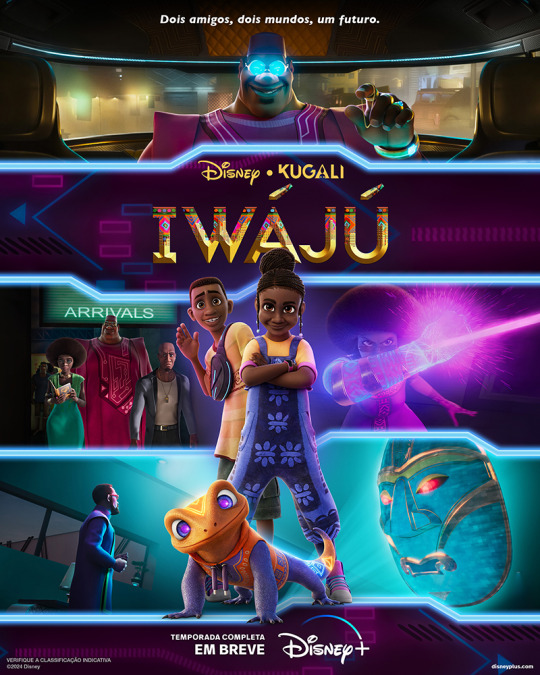
Após muita expectativa, a Disney finalmente liberou o primeiro pôster oficial de Iwájú, primeira colaboração da Disney com a pan-africana Kugali Media. Essa série é o primeiro projeto colaborativo da Disney com um estúdio externo em 100 anos.
Na prévia que foi revelada nós somos apresentos a Tola, uma garota que deseja explorar e conhecer mais do país em que cresceu, acompanhada de seu melhor amigo, Kole, e Oti, uma salamandra robótica criada por seu pai. A série se passa numa Nigéria futurista.
A série é comandada por Olufikayo Ziki Adeola, onde ele assina os roteiros ao lado de Halima Hudson.
Iwájú estreia no dia 28 de fevereiro.
0 notes
Link
#DayoOkeniyi#Disney#FemiBranch#Iwaju#Lagos#Nigeria#OlufikayoZikiAdeola#SijiSoetan#SimisolaGbadamosi#WerucheOpia
0 notes
Text
youtube
Check out a futuristic Lagos with Tola and Kole!
All episodes of KUGALI Media and Walt Disney Animation Studios Television "Iwájú" are available February 28 on Disney+
#Iwájú#Iwaju#Ziki Nelson#Hamid Ibrahim#Toluwalakin Olowofoyeku#Jennifer Lee#KUGALI Media#Walt Disney Animation Studios#Disney+#Disney Plus#Disney+ Originals#Disney Plus Originals#Disney+ Original Series#Disney Plus Original Series#Disney+ Original Animated Series#Disney Plus Original Animated Series#Youtube
19 notes
·
View notes
Text
Jurus Pengendalian Diri

Kurang lebih 6 tahun aku menghabiskan waktu untuk merefleksikan diri, terhitung sejak masuk perkuliahan hingga sekarang. Kukira waktu 6 tahun itu cukup untuk memahami diri ini, nyatanya aku masih tak paham ketika harus dihadapkan dengan kehadiran orang lain dalam arti hubungan romansa.
Aku masih belum bisa memahami bagian itu.
Ntah aku yang belum siap atau ini efek dari tak menuntaskan masa laluku? Kelebihanku salah satunya berorientasi pada masa depan, jadi semua masa lalu hanya diambil hikmah pembelajarannya. Terus orang2 di masa lalu? Ya di cut off-lah. Seperti sudah terlanjur terkubur lalu mau diselesaikan bagaimana lagi. Dari seluruh hal yang aku coba pahami, memahami hubungan romansa ada di nomor sekian. Bukan karena tidak mau tapi rasanya awang-awangen.
Tentunya hal itu tidak boleh dibiarkan berlarut-larut ya kan? Aku harus mampu menghadapinya.
Suatu ketika hal yng aku takutkan datang. DUAR!🌋
Mau sebaik apapun orangnya, memang akulah yang belum siap. Alih-alih kemampuan visionerku memikirkan masa depan, malah pikiran negatif dan rasa takut yang memenuhi isi kepalaku. Ibarat mesin, kemampuan visionerku ini seketika cacat saat dihadapkan dengan hubungan romansa. Padahal aku punya pilihan untuk maju terus pantang mundur, tapi aku memilih mundur terus tanpa ujung.
Aku benci sisi diriku yang selalu berpikir seperti ini:
"Mungkin lebih baik orang itu bersama yang lain/mencari yang lain daripada membuang-buang waktunya."
Secara umum aku orang yang optimis, tetapi untuk beberapa hal, salah satunya hubungan romansa ㅡ aku pesimis. Mana yang harus kubenahi terlebih dahulu? Terlalu complicated isi kepalaku.
Sesungguhnya, sosoknya masih ingin kugali lebih dalam. Sayangnya jari-jemari dan otakku ngadat tak mampu mengetikkan apapun. Disitulah proses penggalian terhenti, tak ada keberanian melanjutkan lagi. Hal itu membuat hari-hariku tak nyaman. Tenggelam di riuhnya pikiran sendiri, terdapat sisi diriku yang menginginkan untuk cari aman berhenti sampai di sini saja. Sedangkan sisi yang lain masih dikelabui rasa penasaran. Sampai pada akhirnya aku tumbang. Gabisa akutu kena cinta cintaan 😅
Setelah satu minggu kelimpungan, resah, gelisah memikirkan sosoknya.
Haruskah aku maju atau membiarkan ia memanfaatkan waktu dengan baik untuk menemukan orang yang tepat?
Jujur, melelahkan memikirkan ini dan itu sampai K.0, padahal belum apa-apa. Akan ada pertemuan-pertemuan lain kedepannya yang nantinya kuhadapi. Mungkin ini cara Allah SWT mengujiku, tepatnya menguji mentalku. Aku harus bermental baja menghdapi pertemuan-pertemuan yang bahkan bisa berakhir saat sudah di tengah jalan. Meskipun sudah bermeditasi tetap saja pikiran ini melayang-layang.
Hingga tiba-tiba hari ini aku mendapat keajaiban.
Aku mengubah arah.
Kendati demikian, alangkah baiknya menjadikan ia sebagai sosok yang kukagumi saja seperti orang2 yang kukagumi semasa SMA. Sehingga aku tak perlu berharap lebih, ya, hanya sebatas mengaguminya, menjadi penonton aktivitasnya di sosial media. Menganggap kesempatan pernah mengenalnya secara langsung hanyalah sebuah bonus. Untuk seterusnya mengagumi dalam diam menurutku langkah yang paling tepat.
Terasa menjadi remaja kembali bisa mengagumi seseorang dari jauh/dalam diam.
ㅡ231023. 10:23 p.m
0 notes
Text


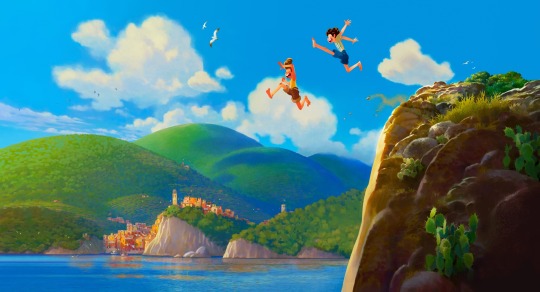
Episode 1 - All Future Disney & Pixar Projects from Disney Investor Day 2020
Happy New Year! Today we’re breaking down all the future feature films and new original series from Walt @DisneyAnimation Studios and @Pixar Animation Studios coming to theaters and @DisneyPlus in 2021 and beyond!
🎧 Now playing on @spotify @applepodcasts and @anchor.fm
#disney#pixar#disney pixar#walt disney pictures#walt disney studios#concept art#animation#walt disney animation studios#disney podcast#podcast#movie podcast#animation podcast#disney plus#raya and the last dragon#disney kugali#kugali media#disney iwaju#pixar Luca#Luca#Pixar Turning Red#Pixar Lightyear
66 notes
·
View notes
Link

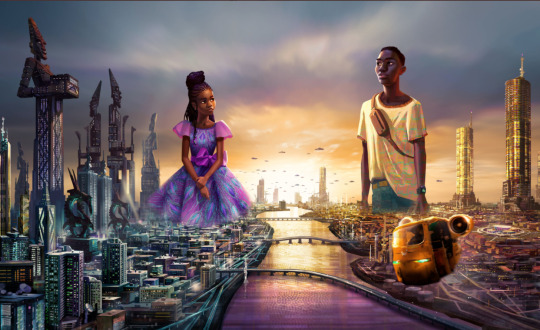
Coming to Disney + 2022
#kugali#kugali media#iwaju#Disney#disney plus#black history month#black characters in comics#black comic book characters#africa#pan african#afrocentrism
14 notes
·
View notes
Text
An Alternative to the Studio System?: Indie Animation Forges Ahead [Part 3]
youtube
continued from part 2. Split because Tumblr claimed there was an error in the post.
Just as exciting are the shows by Black creators. I've mentioned a few in this post already, including Creative Theory, Brandon Wright, Wisdom Nunn, Lucha Vandross, Nya, and Pia. For one, there's a 2D animated series named Jumbie, produced by a small studio in Trinidad and Tobago, GemGfx Animation Studios. Originally scheduled for release in February of this year, the Jumbie pilot was delayed to February 2023, because the studio was working on a music video for "A Better Tomorrow", a song by Mark Loquan, featuring Terri Lyons, which came out in April. With that, Jumbie is going forward.
Reprinted from Pop Culture Maniacs, my History Hermann blog, and Wayback Machine. This was the eleventh article I wrote for Pop Culture Maniacs. This post was originally published on July 15, 2022.
In addition, there is an animated hiphop musical entitled Battu, which is scheduled to become an animated series on Cartoon Network. The latter has also picked up a show drawing from Nigerian culture entitled Iyanu: Child of Wonder to be overseen by a Black-owned animation studio, Lion Forge Animation. Before Disney Branded Television was headed by Ayo Davis, a Black woman, it agreed to pick up Iwájú. The latter is an Africanfuturist series set in Lagos, Nigeria. Disney is co-producing it with Kugali Media, a Pan-African entertainment company.
There are many other Black indie creators. There's Vampire Nwt's suspense mystery show entitled Blackwater Creek. It has queer Afro-Latine leads named after magic, monsters, and fruits! Even more exciting is Captain Zero. It is an action drama about a social media-obsessed superhero named Captain Zero who "must find the cause of his depression-fueled blackouts in order to save his city and himself." The series is created by a Black non-binary illustrator, filmmaker, and writer, Lamard Cher-Aimé. It is produced by a Black-owned animation company, Cutting Edge Animation.
This animated series tackles "mental health in the Black community, identity," according to Cher-Aimé. Currently, five seasons, 4 specials, and a feature film for Captain Zero are planned. The show's GoFundMe states that with enough money it can turn the show into a reality. The show, and another produced by Cutting Edge Animation, Space Friends, are often promoted by Cher-Aimé. They often ask their followers to name show characters, and showcase series art and related merchandise. Interviews, Q&As, and more further pull in potential viewers on the show's YouTube channel.
Recently, a short five-minute film entitled "Captain Zero: Into The Abyss", funded in part by Chromatic Black's Ida B. Wells fund, aired. It stars the Black trans actress Angelica Ross, who is the film's executive producer. The film focuses on a therapy session of Xerxes Hughes, aka Captain Zero, with Dr. Niobe (voiced by Ross). It was posted on the show's YouTube channel. It is within a video that is about 1 hour, 50 minute video, complete with mental health professionals, Ross, Cher-Aimé, and others talked about the film, Black representation in animation and comics, mental health, and many other topics.
These series prove what Ashley Nichols said: that "anyone can tell an amazing story." It also seems to prove that people with vision and passion can make "god tier animation". Amazing animation doesn't always need a "studio behind it with a million dollars." There is no clear answer for making indie animation viable. After all, people can still steal content of an indie animation and profit off it.
Even so, some have supported waiting longer for series to come to fruition, giving those producing it more time to rest, polish their ideas, and make the shows better. Furthermore, there is no doubt that corporate media fails to represent many aspects of society, with indie animation making cooler content despite the need for funds. There are the continual challenges of people not taking animation seriously.
Unsurprisingly, there have been calls for a website for indie animated series which works like Webtoon. The Animation for Adults site proposed an awards show just for indie animation. Creator Nation promoted a Discord server for indie creators, indie animated shows, and indie comics. Some noted news of Netflix's war with its animation department by letting go many of its animation employees. Many creators responded sharing their series or pilots in the process. It has led more toward indie animation.
Creators have seen indie animation as the way to go. Some said that creators should do promos for other indie animations or said that now is the most important time to support, and follow, indie projects. This is coupled with the realization (and recognition) that those in the animation industry don't have stable jobs.
Then, there's Project City, created by Rad Sechrist, well-known as the showrunner of Kipo and the Age of Wonderbeasts. In February, I argued that Project City has "the potential to expand the indie animation space beyond...often crowdfunded series on YouTube". I stated that it allows for "more independence for creators in the series, movies, music, or shows they create." While it is amazing that Sechrist is funding, and creating, his next film (The Brave War), co-created with Andra Gunter and Daniel Rojas, independently, progress on the platform is somewhat slow.
There was lukewarm reception to his idea that people who buy shares in a project "have the right to make and sell merch" but have to "drop profits back into our system that distributes to all IP owners". Some about the potential use of NFTs, which Sechrist realized was a good point. He is strongly against NFTs and for good reason. Others called it "iffy", said the execution could be tricky, or worried it could set a bad precedent. On the other hand, there were those more receptive to Sechrist's idea.
Project City now emphasizes its role as an animation school, including 15-minute lectures on various topics, and is now defined as a "project based platform for learning how to create animation." Back in March, Sechrist said they are continuing with F-IP (fractional IP), where people could buy shares of an IP, but are not using Blockchain or NFT, and stated they would be launching it within the next month. That did not happen. The idea continues to be developed. A tweet from the project's account used the #FIP hashtag on June 24. But, there haven't been many more updates beyond that, as Sechrist last mentioned it in a tweet on January 7.
On the other hand, on June 18, Sechrist said that they have been wanting to take steps toward making Project City "a streaming platform of creators learning and sharing their process/knowledge." He added that Project City takes "no ownership of IP people post". Anyone can post and delete any video they have posted. In addition, he said they were considering allowing people to post 1 minute clips on the site. Ultimately, Project City may be part of what Avara describes, giving people a platform who wouldn't have it "in the traditional studio setting". More fundamentally, it is part of allowing creators to share stories on their own terms.
© 2022-2023 Burkely Hermann. All rights reserved.
#jumbie#black animation#Youtube#kipo#rad sechrist#indie animation#project city#daniel rojas#the will of monsters
2 notes
·
View notes